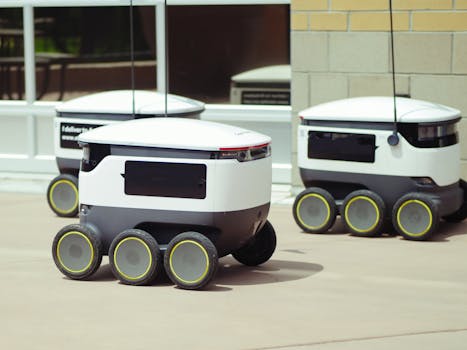
Smart Cities: Urban Trends for 2025 – Revolutionizing the Future of Urban Planning
Smart Cities, the concept of using technology and innovation to create more efficient, sustainable, and livable urban environments, has become a major focus for cities around the world. As we approach 2025, it’s clear that the smart city movement is gaining momentum, with new technologies and trends emerging every year. In this article, we’ll explore the latest urban trends for 2025 and how they’re shaping the future of urban planning.
Introduction to Smart Cities

Smart Cities, also known as intelligent cities or digital cities, use information and communication technologies (ICTs) to enhance the quality of life for citizens, improve the efficiency of urban operations, and reduce the environmental impact of city living. The concept of smart cities has been around for over two decades, but it’s only in recent years that we’ve seen significant advancements in the field, driven by the increasing availability of data, the development of new technologies, and the growing need for sustainable and resilient cities.
Trends in Smart City Development

So, what are the latest trends in smart city development? Some of the key areas of focus include:
- Sustainable Energy: Cities are increasingly investing in renewable energy sources, such as solar and wind power, to reduce their reliance on fossil fuels and lower their carbon footprint.
- Smart Transportation: The development of intelligent transportation systems (ITS) is transforming the way people move around cities, with features such as real-time traffic monitoring, smart traffic signals, and autonomous vehicles.
- Urban Analytics: The use of data analytics and artificial intelligence (AI) is helping cities to better understand and manage their urban environments, from predicting and preventing crime to optimizing waste management and public services.
- Smart Buildings and Homes: The integration of smart technologies into buildings and homes is improving energy efficiency, enhancing the quality of life for residents, and reducing the environmental impact of urban development.
- Citizen Engagement: Cities are using digital platforms and participatory governance models to engage with citizens, involve them in the decision-making process, and provide more responsive and inclusive public services.
Examples of Smart City Initiatives

There are many examples of smart city initiatives around the world, from the development of new smart cities in Asia and the Middle East to the transformation of existing cities in Europe and North America. Some notable examples include:
- Singapore’s Smart Nation Initiative: This comprehensive program aims to harness technology and data to create a more livable, sustainable, and competitive city-state, with initiatives such as smart transportation, urban planning, and public services.
- Barcelona’s Smart City Strategy: This Spanish city has implemented a range of smart city initiatives, including smart lighting, waste management, and urban mobility, to improve the quality of life for citizens and reduce its environmental impact.
- New York City’s Smart City Initiative: This program aims to make New York City one of the most sustainable and resilient cities in the world, with initiatives such as smart energy, transportation, and waste management.
Conclusion

In conclusion, the concept of smart cities is revolutionizing the future of urban planning, with new technologies and trends emerging every year. From sustainable energy and smart transportation to urban analytics and citizen engagement, the possibilities for creating more efficient, sustainable, and livable cities are vast. As we approach 2025, it’s clear that the smart city movement will continue to shape the future of urban development, creating better places for people to live, work, and thrive.






5 thoughts on “Smart Cities: Urban Trends for 2025 – Revolutionizing the Future of Urban Planning”
Comments are closed.